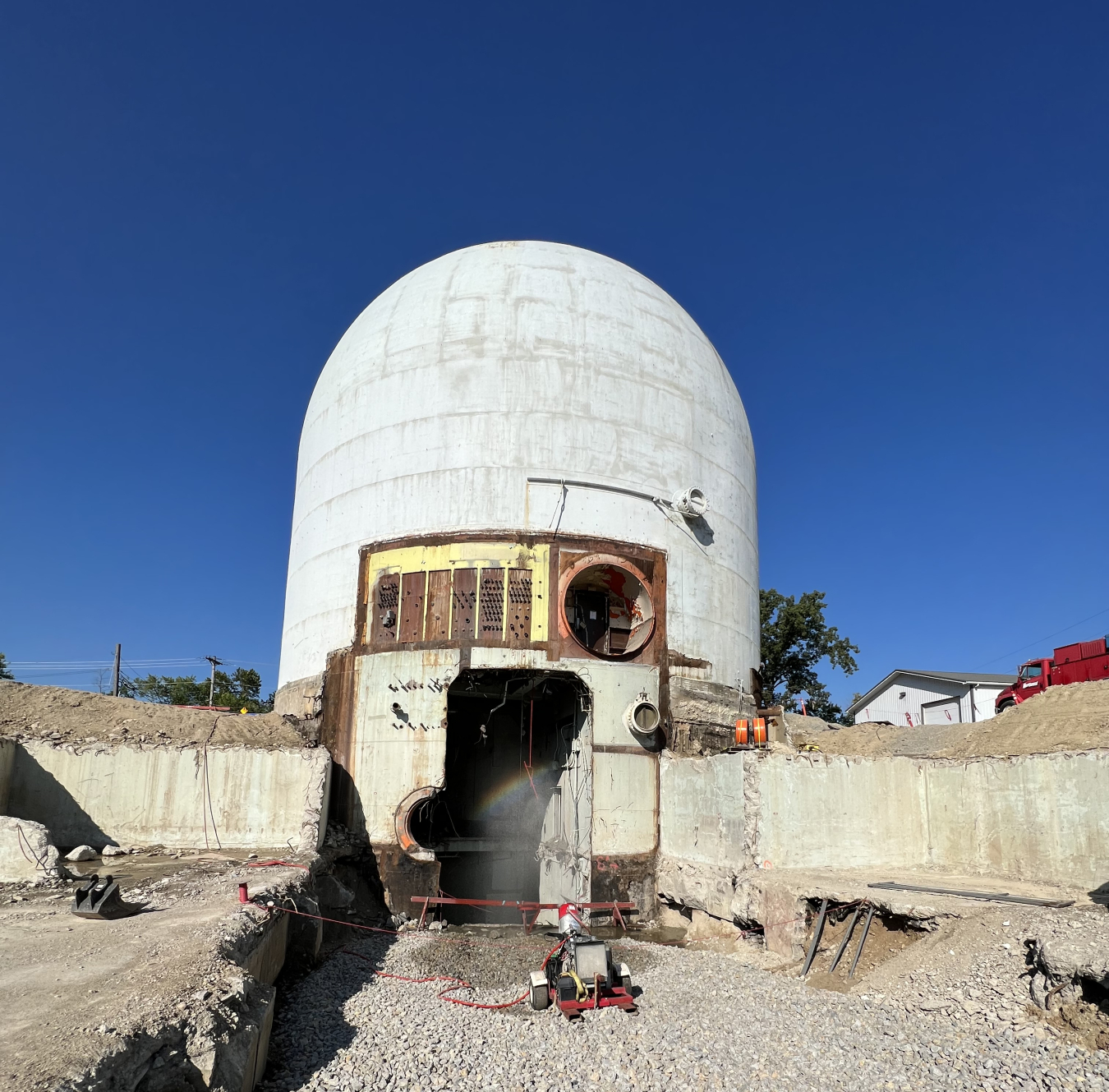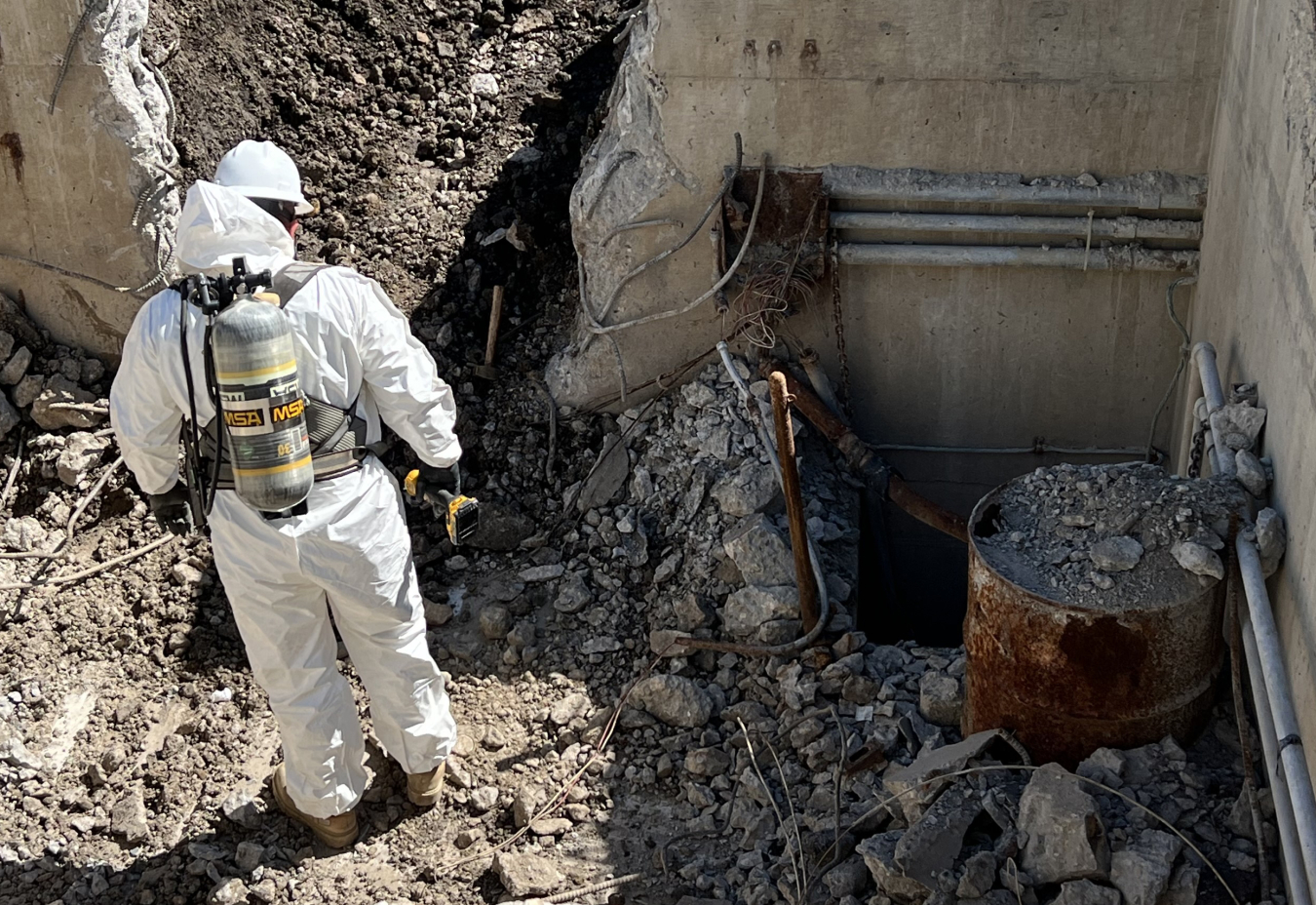Safety representatives handle changed conditions during building demolition in Piqua, Ohio.
November 16, 2022While demolition of buildings at a decommissioned reactor site in Ohio is taking place, the safety and health of workers and the public is the top priority.

Outside of the reactor dome at the Piqua Decommissioned Reactor Site in Ohio.
The Piqua Decommissioned Reactor Site sits along the banks of the Great Miami River in Ohio. The reactor has been decommissioned since 1968 and the buildings are being demolished as part of the Piqua Decommissioned Reactor Demolition Project.
LM Strategic Partner (LMSP) Safety and Health Professional David Janssen and other safety representatives are overseeing the project. Janssen’s approach to any project, especially this one, is making sure the team communicates effectively from the start, breeding a culture that keeps health and safety top of mind.
“Effective communication between site staff and contractors is essential for creating a culture of safe work performance,” Janssen said. “Since this is a demolition project, conditions can change in a moment’s notice, and this requires the team to be working with each other and communicating openly and effectively.”

Contractors pause work to evaluate an abandoned 55-gallon drum in an underground utility vault at the Piqua Demolition Project.
Conditions did shift at Piqua, as the team discovered an abandoned 55-gallon drum in an underground utility vault. The drum was covered in debris, upright and unmarked, which made it impossible to assess the container’s integrity and contents, if any. The project team’s safety culture was on display as work was stopped immediately for the safety of the workers, the public, and the environment.
The project team demonstrated a Safety Conscious Work Environment culture by gathering input from senior managers, subject matter experts, and employees to develop a plan to safely address the situation. The project team faced the difficult task of finding the best way to enter the space to evaluate the drum, as it was located about 10 feet below ground level with only a ladder for entry and exit. For the safety of all involved, the team decided to excavate a ramp down into the vault to access the drum.
Once the plan was developed to address the drum, the team was briefed and trained, then entry to the vault was made. Because the contents of the drum were unknown, the team had to enter the vault in appropriate personal protective equipment (PPE).
To the relief of everyone at the site, the drum was empty and presented no chemical or radiological hazards. Janssen expressed appreciation to everyone at the site for working as a team, and for the excellent level of communication from start to finish.
“Our communication at Piqua is pretty good. While effective communication always takes practice and active commitment, the key to the success of this work and ongoing work at Piqua is the involvement of the folks at the site,” Janssen said. “Everyone on site is a valuable resource and has a different perspective, which contributes to the safety culture that helps us all be protective of one another.”
Janssen said the team adhered to an important part of the safety and health process by using administrative controls and following safety protocols.
“Once a hazard has been identified, like at Piqua, we take steps to eliminate the hazard by removing a hazardous characteristic, such as providing unlimited access to a confined space, clearing out hazardous debris prior to entry, wearing appropriate PPE, and using closed-cab excavators with filtered and conditioned air, as engineering controls, to protect the operator,” Janssen said. “Following and using administrative controls, like stopping work and assessing the situation as a team, helps protect the workers, the public, and the environment.”

